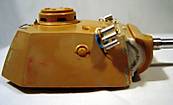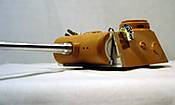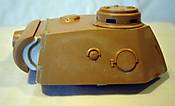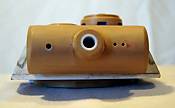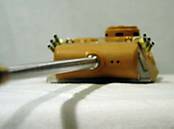1⁄35Italeri Panther D
3
Comments

the turret
Part 1 of this build will focus on the turret. Part 2 will cover the hull/chassis and finish. I do not claim to be an expert on German Armor, nor an authority on Panthers, or a Master Modeller/Scratchbuilder. I am only attempting to portray a Panther Ausf. D from the April 1943 production batch and after reading my references and studying pictures, this article details the corrections I felt needed to be done. I am sure that there will be those “in the know” that could blast holes in this article and my build.

Comments
Chief,
That is a fine looking panther you have created. Great work on improving the base kit and very nicely written article.
Best regards,
Robert
JUN 25, 2005 - 08:02 AM
Thats great! Very inspiring. I'd never been in to scratchbuilding and all that, but I'm really inspired. Thanks for sharing
JUN 25, 2005 - 09:08 AM
Good Article. I think if you're prepared to put the work in Italeri kits are a bargain. They sometimes score over Dragon in detail as well.
JUN 30, 2005 - 10:17 AM
Copyright ©2021 by Lauren Blakley. Images and/or videos also by copyright holder unless otherwise noted. The views and opinions expressed herein are solely the views and opinions of the authors and/or contributors to this Web site and do not necessarily represent the views and/or opinions of Armorama, KitMaker Network, or Silver Star Enterrpises. All rights reserved. Originally published on: 2005-06-25 00:00:00. Unique Reads: 18290




